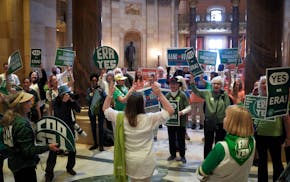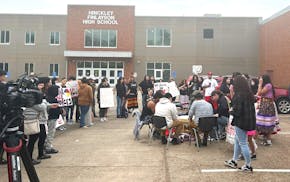Opinion editor's note: Editorials represent the opinions of the Star Tribune Editorial Board, which operates independently from the newsroom.
•••
By embracing and defying the cold climate, Minneapolis and St. Paul were considered hot cities by urban observers for many years. And why not, given their natural and artistic amenities, their reputations for good governance and great people?
During the summer months, the positive impressions were burnished in events that helped define the Twin Cities to residents and visitors alike.
Civic leaders, especially Mayor Jacob Frey, want those halcyon days of urban vibrancy back in Minneapolis. So they're backing efforts to return people to downtown. Workers, yes, although with a realization that every downtown employer has its policies on workplace flexibility.
But events are different. By definition, they need to be experienced. So an effort to publicize — and populate — 882 activities in downtown Minneapolis through Labor Day is underway, led by Frey, the Minneapolis Downtown Council, the Park Board and Twin Cities Pride. Daily events are neatly and chronologically categorized on the Downtown Council website, including indoor and outdoor activities in the city's center.
Across the river, city leaders have similar hopes for building on its recovery and revitalization, reflected in the St. Paul Downtown Alliance's #WelcomeBackStPl campaign and calendar of more than 300 events.
"Don't be a hermit at home," Frey said this week at the Minneapolis kickoff event at the Commons park across from City Hall and U.S. Bank Stadium. "We live in a great city. Experience it again."
Those who accept that invitation may be featured on billboards from a campaign from Minneapolis Momentum, whose partners include Meet Minneapolis, the organization tasked with bringing conventions and significant events to the city. The digital billboards will highlight "positive stories of people enjoying the city."
Of course, fun is also business for many enterprises, and visitors help fill municipal coffers. Both Minneapolis and St. Paul face challenges, with fewer hotel and restaurant visits and lower transit usage than pre-pandemic. Unfortunately, COVID is still present and, in fact, is more virulent nationally than last Memorial Day, albeit far from its crisis heights. Studies show pandemic life can be safer outdoors, so summer events in the cities may be especially appealing to visitors.
On the other hand, crime is a great deterrent here and in metro areas across the country. To make matters worse, a dire shortage of police officers, especially in Minneapolis, is well known by nearly everyone — including criminals — amplifying the relative risks. Frey acknowledged those twin challenges. "Neither one of those things are unique to Minneapolis," he said. "Every major city in the entire country is experiencing the soon-to-be aftermath of a global pandemic. Every city in the entire country is experiencing the associated uptick in crime."
But to convince residents and visitors to experience what is unique to urban events, it will take a concerted effort to keep them safe. The public's perception of personal security was particularly damaged in the violent aftermath of George Floyd's murder, making it harder to convince people to come back.
Minneapolis and St. Paul are indeed great cities. Whether they're still considered "hot" by national standards shouldn't matter to Minnesotans who used to flock to events and enjoy the best of what the Twin Cities can offer. A comeback is possible, and leaders in both cities deserve credit for leading the way. But as the calendar fills up with events, those same civic leaders must ensure visitors stay safe while they're there.

Let voters decide on Equal Rights Amendment

Readers Write: Graduation, child care, midwifery, Timberwolves fans

How to avoid an Uber/Lyft disaster



